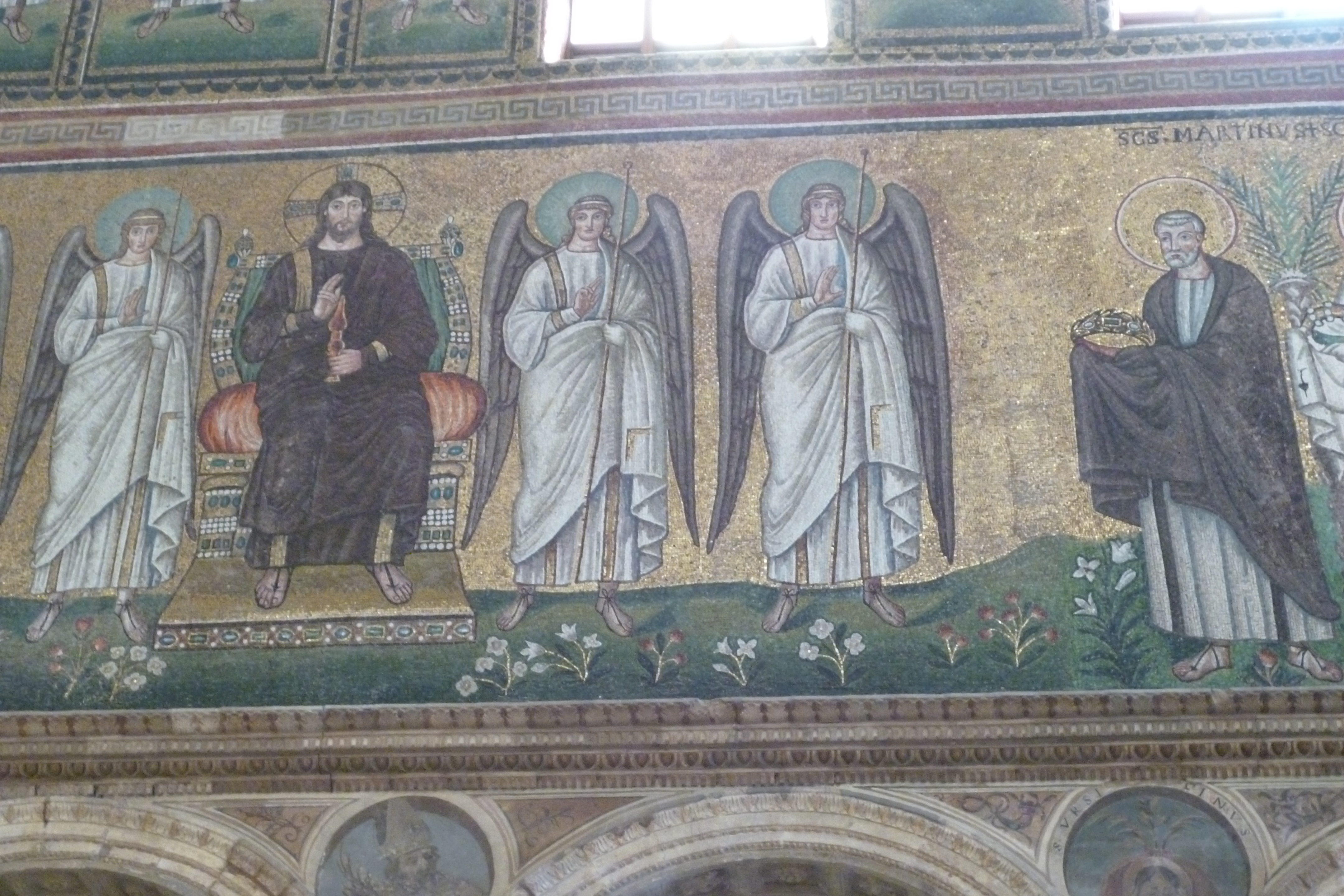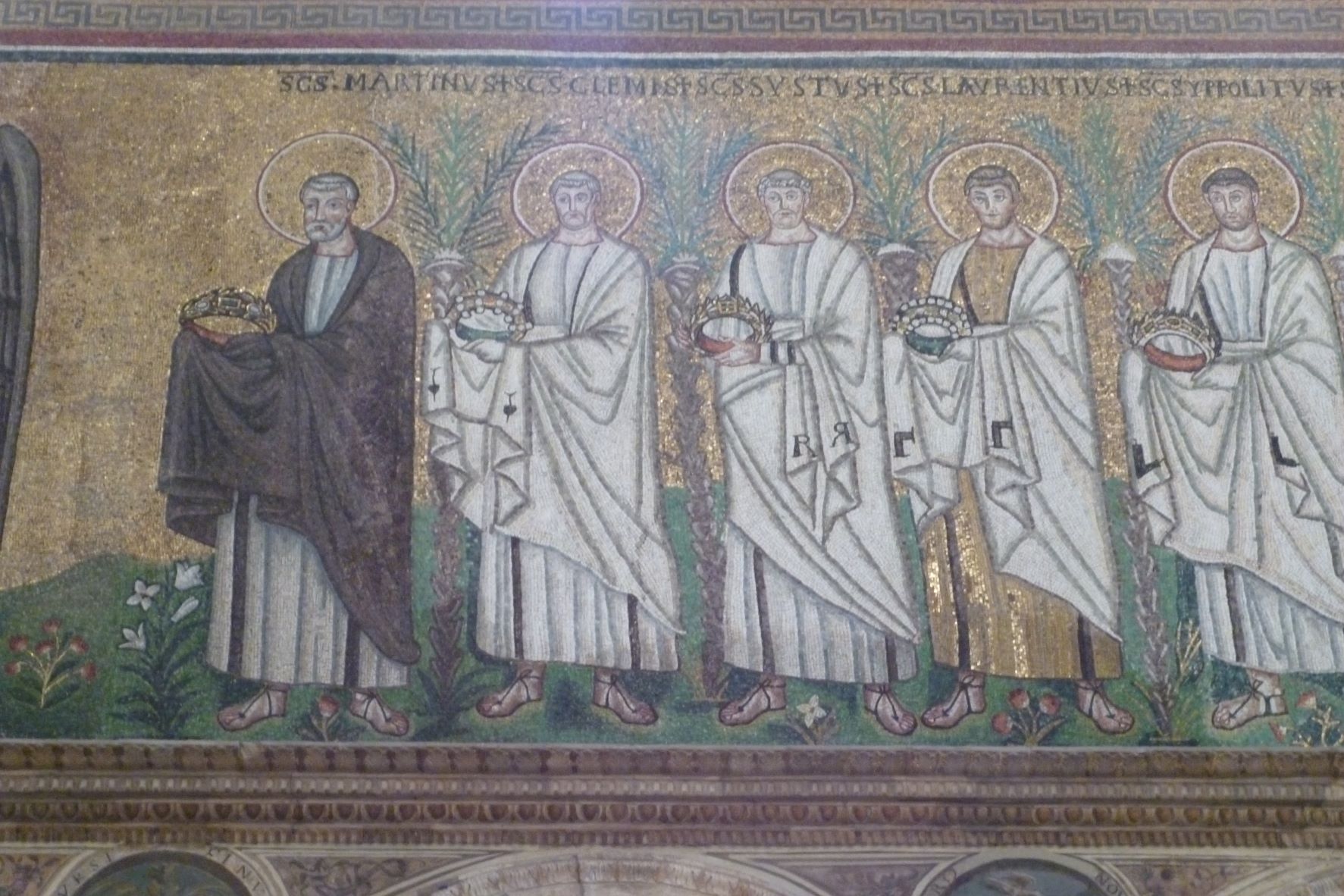A l’intérieur de la basilique Saint Apollinaire le Neuf, un décor de mosaïques présente le cortège des saints, des prophètes et des scènes de la vie du Christ. Dans les espaces des fenêtres hautes, figurent 32 saints et prophètes vus de face avec un manuscrit roulé dans les mains ( paroles du Christ qu’ils transmettent) . Saint Martin mène la théorie des grands saints de l’Eglise, en prenant la tête des vingt six saints qui font partie de ce grand cortège. Sa place en tête rappelle qu’il fut le premier dédicataire avant Apollinaire; il porte ainsi le même manteau pourpre que le Christ, symbole du pouvoir et rappel du manteau partagé. Les trois saints qui le suivent sont saint Clément, saint Sixte, et saint Laurent: tous trois portent les couronnes et sont encadrés par les palmes du martyre ; ils sont vêtus de lin blanc, couleur de la sainteté reconnue. Saint Martin est en position remarquable, lui, le premier saint non martyr menant toute la théorie des saints.
Inside the Basilica of St. Apollinare, a mosaic decoration presents the procession of saints, prophets and scenes from the life of Christ. In the upper window spaces, 32 saints and prophets are depicted facing each other with a rolled-up manuscript in their hands (the words of Christ that they transmit). Saint Martin leads the theory of the great saints of the Church, taking the lead of the twenty-six saints who are part of this great procession. His place at the head reminds us that he was the first dedicatee before Apollinaire; he thus wears the same purple mantle as Christ, a symbol of power and a reminder of the shared mantle. The three saints who follow him are St. Clement, St. Sixtus, and St. Lawrence: all three wear the crowns and are framed by the palms of martyrdom; they are dressed in white linen, the colour of acknowledged holiness. St Martin is in a remarkable position, the first non-martyr saint to lead the whole theory of saints.

 "/>
"/>
